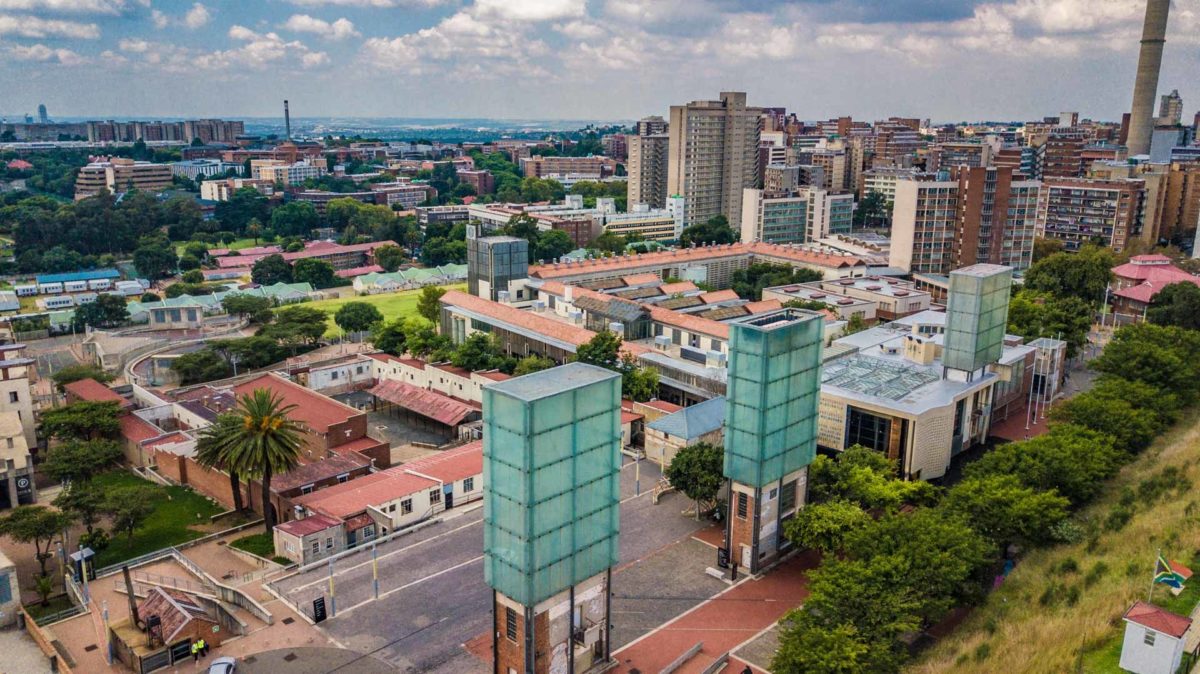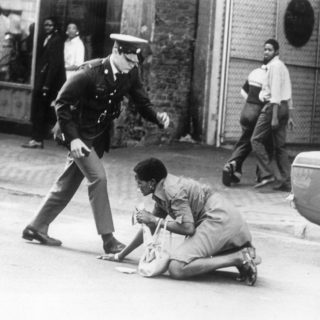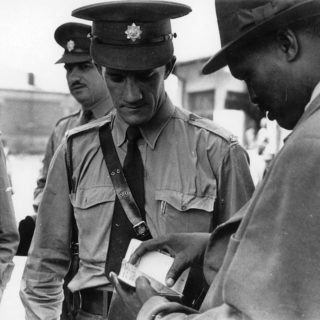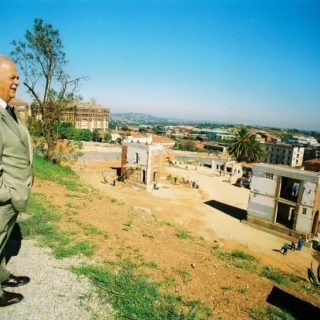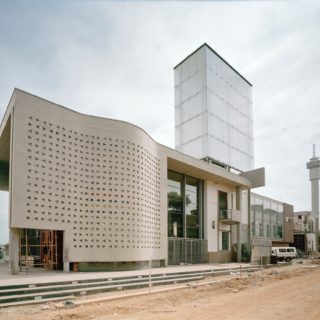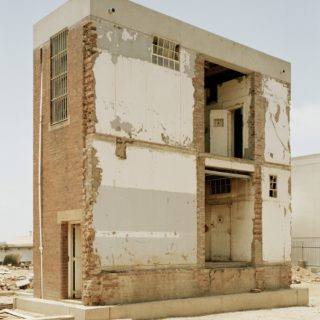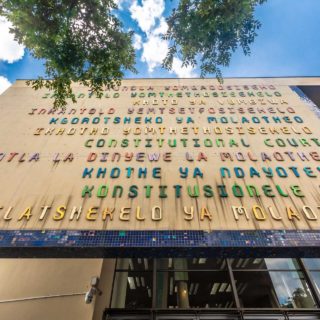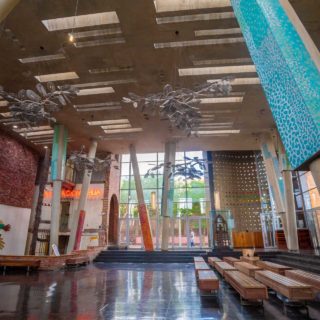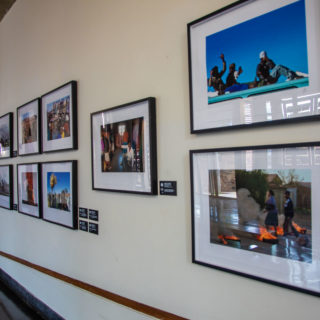The story of the Constitutional Court
The highest court in the land, South Africa’s Constitutional Court is a deeply symbolic and significant site. Though its doors were first opened by then President Nelson Mandela on 14 February 1995, it occupied temporary accommodation elsewhere for a decade, until the new court was inaugurated at Constitution Hill as an act of reclaiming a place previously affiliated with the violation of human rights.
Choosing a site
Although several sites around the country were considered, the Old Fort prison complex was a consistent forerunner. “The Old Fort was the Robben Island of Johannesburg,” said then Constitutional Court Judge Albie Sachs. “A new Constitutional Court rising there would dramatise the transformation of South Africa from a racist, authoritarian society to a constitutional democracy. A more South African centre of repression and hope could not have been found. Above all, it had history. This wasn’t just a neutral space – this was a space of intense drama, of human emotion, of repression, of resistance. And here was the chance to convert negativity into positivity.”
In addition to the site’s history, its proximity to Hillbrow was a drawcard. The court had to be accessible to the public, the Constitutional Court judges decided, and had to contribute to the regeneration of the city, areas of which, including Hillbrow, had fallen into disrepair. The prison complex offered both.
The winning design
Once the site had been selected, three architects – Derek and Vivienne Japha from the University of Cape Town and Johannesburg-based Herbert Prins – were appointed to survey the site and to put together a brief for an international architectural competition.
The brief, issued in 1997, emphasised the importance of the court being rooted in the South African landscape and being restrained rather than opulent. Though dignified and serious, it was intended to be welcoming and open, a structure to make the public feel free to enter, and safe and protected once inside. The very last decision to be made before the brief went out concerned the name of the precinct: Constitution Hill it was.
The tendering process that followed was extensive and saw 580 anonymous applications produce 185 formal entries, including 40 from foreign countries. The winning design, announced at a ceremony at the Old Fort in 1998, a year after the brief was issued and chosen by an international panel of judges, was a joint entry by South African firms Urban Solutions and OMM Design Workshop.
The winning design was marked by one important characteristic: it started from a point of urban design, offering a space that permitted freedom of movement between Hillbrow, Parktown and Braamfontein, and that served multiple purposes. It brought the prison into conversation with this new space, creating a site for remembrance and democracy to co-exist.
Building the court
The process from selection to construction was problematic at first, thwarted by budgetary crises and urban degeneration in the area. Fortunately, at around the turn of the century, Constitution Hill and Johannesburg’s inner city began to develop concurrently, bringing with it renewed financial interest and infrastructural revival. Eventually, construction began in earnest, with Rainbow Construction and WBHO awarded the R87.5-million tender to build the court and the infrastructure of the site. The CEO of Rainbow Construction, Chris Jiyane, was one of the few black architects who received architectural training during apartheid.
A crucial part of the process of building the court was the demolition of the Awaiting Trial Block. This process, however, was done with painstaking care – almost brick by brick – as the bricks were used to construct a wall in the Constitutional Court foyer, a wall in the chamber (directly behind the judges’ chairs) and the Great African Steps, which lie between the court and Number Four.
With the court nearing completion, the rest of the precinct was reconfigured to connect to surrounding streets, making it accessible to the public and a crucial component if the inner city’s rebirth.
The Constitutional Court is inaugurated
On 21 March 2004, Human Rights Day and 10 years after South Africa became a democracy, the Constitutional Court was inaugurated at Constitution Hill.
Then President Thabo Mbeki, speaking at the opening, said, “The court represents the conversion of the negative, hateful energy of colonialism, subjugation and oppression into a positive, hopeful energy for the present and the future; a celebration of the creative potential of our people that has given us an architectural jewel. Constitution Hill also makes the statement that central Johannesburg will continue to grow and thrive, no longer a place of segregation and urban decay, but a leader in our country and continent as the city of the future.”
The following day, 22 March 2004, Constitution Hill opened to the public as a museum focused on heritage, education and tourism.
Landmark cases
Since its inception in 1995, the court has handed down judgements that have fundamentally changed the face of South Africa. Some of the court’s most high-profile cases include:
- Outlawing of the death penalty: S v Makwanyane (1995)
- The right to housing: Government of the RSA v Grootboom (2000)
- The common-law definition of marriage to permit same-sex couples the same status, entitlements and responsibilities accorded to heterosexual couples: Minister of Home Affairs and Another v Fourie and Another (Doctors for Life International and Others, amicus curiae); Lesbian and Gay Equality Project and Others v Minister of Home Affairs and Others (2005)
- Employment discrimination against an HIV-positive person: Hoffman v South African Airways (2000)
- Right to healthcare and access to HIV/Aids treatment: Minister of Health v Treatment Action Campaign (2002)
Further information on these and other landmark cases can be found on the Constitutional Court website.
Architecture and art
At the Constitutional Court, architecture and art cannot be separated. In 2003, a year before the court opened, a call referred to as the National Artwork Competitions went out to all artists and crafters, asking them to submit artistic concepts to decorate the space in myriad ways. As chimneys, tiles, steps, windows and other surfaces were painted, inscribed and mosaicked, the space bubbled to life.
More information on the art at the court is provided in the section on the Constitutional Court Art Collection.

 +27 11 381 3100
+27 11 381 3100
